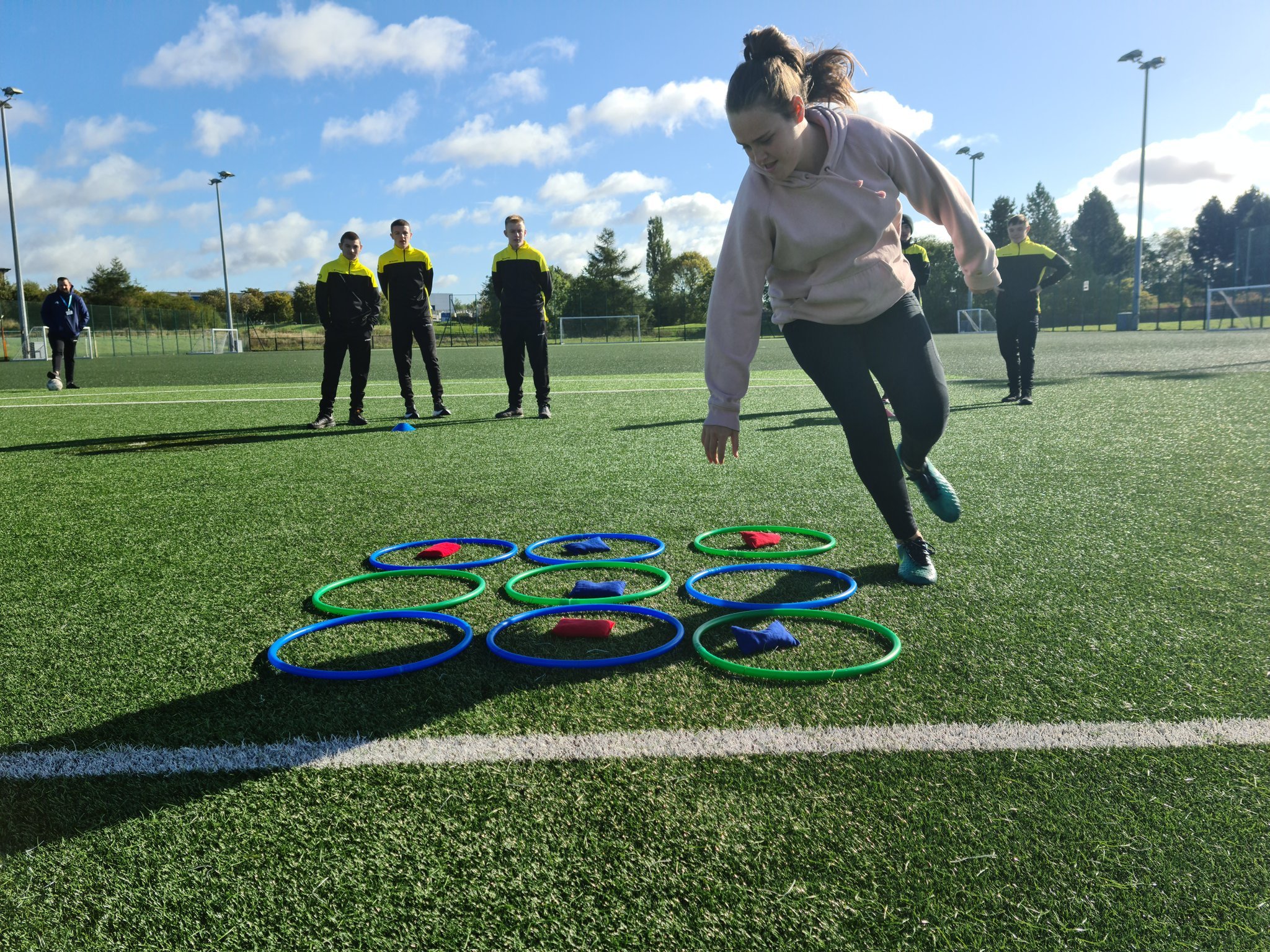
Put simply Active Play is FUN, INCLSUIVE, ACTIVE play for all.
Active Play is a government funded scheme that was typically delivered to primary schools however, in the recent years it has branched out to nurseries and community settings.
Active Play is about improving physical literacy.
“Physical literacy can be described as the motivation, confidence, physical competence, knowledge and understanding to value and take responsibility for engagement in physical activities for life.”
(IPLA, 2017)
Children love to play but with recent pandemics, social culture, social media and technology having a huge impact on being physically active, activity levels especially report by WHO (World Health Organisation) 2022.
“Regular physical activity promotes both mental and physical health in people of all ages. Yet, today, more than 80% of adolescents and 27% of adults do not meet WHO’s recommended levels of physical activity. This affects not only individuals over their life course, but also places a financial burden on health services and society as a whole.”
At FARE Scotland we plan to make these figures change. FARE are currently running Active Play programmes within three Glasgow City Council schools, each of these schools have the programme for a total of 15 weeks. We also work alongside the Active Schools Division and have one school, as well as a nursery and a community setting to which we host the programme for 35 weeks. Within each setting all children and adults are included as well as volunteers, this includes teaching staff, support for learning worker (SfLW) and classroom assistants. Even the odd head and depute head teacher gets involved!!.
HOW IT WORKS
Active Play is always outdoors unless there is any risk factors not allowing us to do so as, being outdoors is what our children are missing. Breathing in the fresh air allows the children to be more resilient to the elements, increasing endorphins and they seem to enjoy it much more than being indoors.
Each session is one hour long and is split into two sections. The first is structured play. For the first half hour we play various games and adaptations of games, like tig, treasure island and hot chocolate are played. All games are adapted to suit the age and stage of the children we are working with. This includes adapting games for those with ASN, physical disabilities and any other abilities that require adaptations to be made. Everyone is included, at all times!!
This is so that we get those heartrates raised, we get everyone involved in moderate to intense physical activity. We are looking for everyone to be taking jackets off, drinking more water and looking like they’ve been running around and physically active. This is to help with encouraging physical literacy, getting that muscle memory in place and increasing those fundamental movement skills we see lacking currently.
The second half is free play, equipment is laid out and everyone chooses a piece of equipment and just plays. This part is to encourage creativity, imagination and allow children to explore being children again. The aim is to show children that being active is fun and not just something to keep them fit.
It is also to allow them to explore their creative imagination therefore becoming more independent and self-reliant and confident individuals
“levels of communication have risen and the children now play with each other in a productive way, choosing different sports not just the typical ones they play at afterschool clubs”.
Ms Short Highpark primary school (GCC)
The children have become much more resilient and encourage others to play with them and make up their own games which is great to see.” (ASD school)
“My pupils love Active Play and it’s made a difference in a positive way in the classroom as well especially regarding behaviour.” (GGC school teacher)
KIDS
“We love Active Play.”
“We have something to look forward to all week”.
“The fresh air helps us concentrate better in class”.
“I’m always buzzing for Active Play”.
